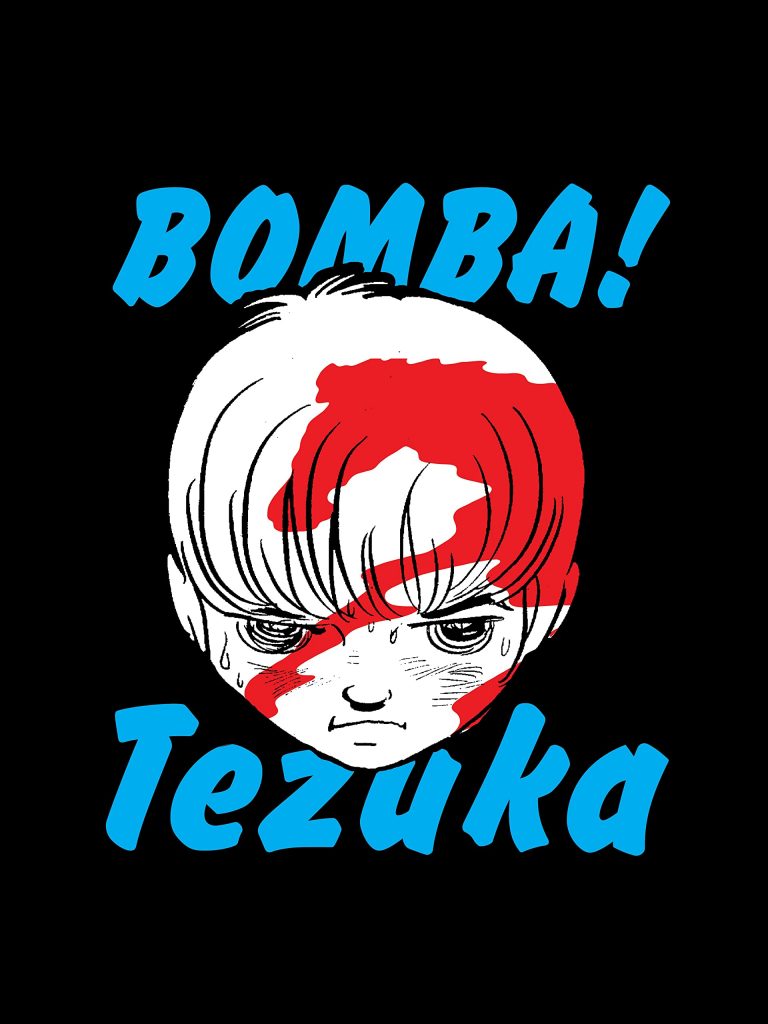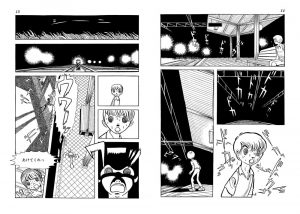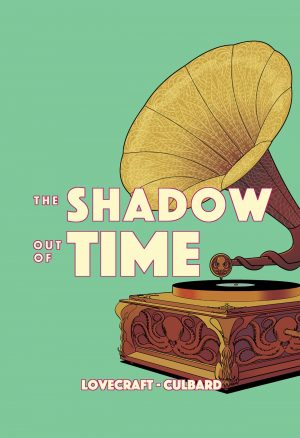Review by Ian Keogh
Although what seems to be a young boy is pictured on the cover, Bomba! isn’t one of Osamu Tezuka’s all-ages graphic novels. Nor is it one of his finest, never really following through on the introduced themes, but it succeeds as steamy pulp horror with creative moments, and is beautifully drawn.
Seen on the sample pages, a magnificently moody opening sequence of Tetsu alone at a railway station gradually becoming more and more fearful sets the tone of this dark psychological thriller. Despite looking younger throughout, Tetsu is seemingly in his mid-teens, and doesn’t have much of a life. His domineering mother bullies his father, and beats him, while he’s picked on by the school gym teacher. The only person in his life who shows him any kindness is art teacher Miss Misushima, who believes him when he tells her he frequently hears frightening noises getting ever louder. Tetsu fixates on her, determined he’ll marry her when he’s old enough. Readers will instantly recognise this as a forlorn dream, although there are subsequently surprising revelations about Miss Misushima undermining her role as the epitome of angelic purity.
Bomba is the name of a horse ridden by a cruel officer Tetsu’s father served in the Pacific Wars, and also given to the giant horse that eventually causes death and devastation. It’s manifested from Tetsu’s subconscious, giving a physical reality to his enraged impotence. The psychological themes fit in with Tezuka’s transitional works from the late 1960s and early 1970s, when he was attempting to broaden his audience from the children’s market he dominated. However, while on that score streets ahead of anything being produced in Europe or the USA in 1970, more efficient examinations of similar territory have raised the game. It’s still readable and interesting, but the relationships now seem skimmed and under-explored.
Kodansha publish Bomba! in a pocket format on pulp paper with the edges untrimmed, which is a nice touch. It presumably echoes the format in which the story would have been gathered for its original Japanese publication.





